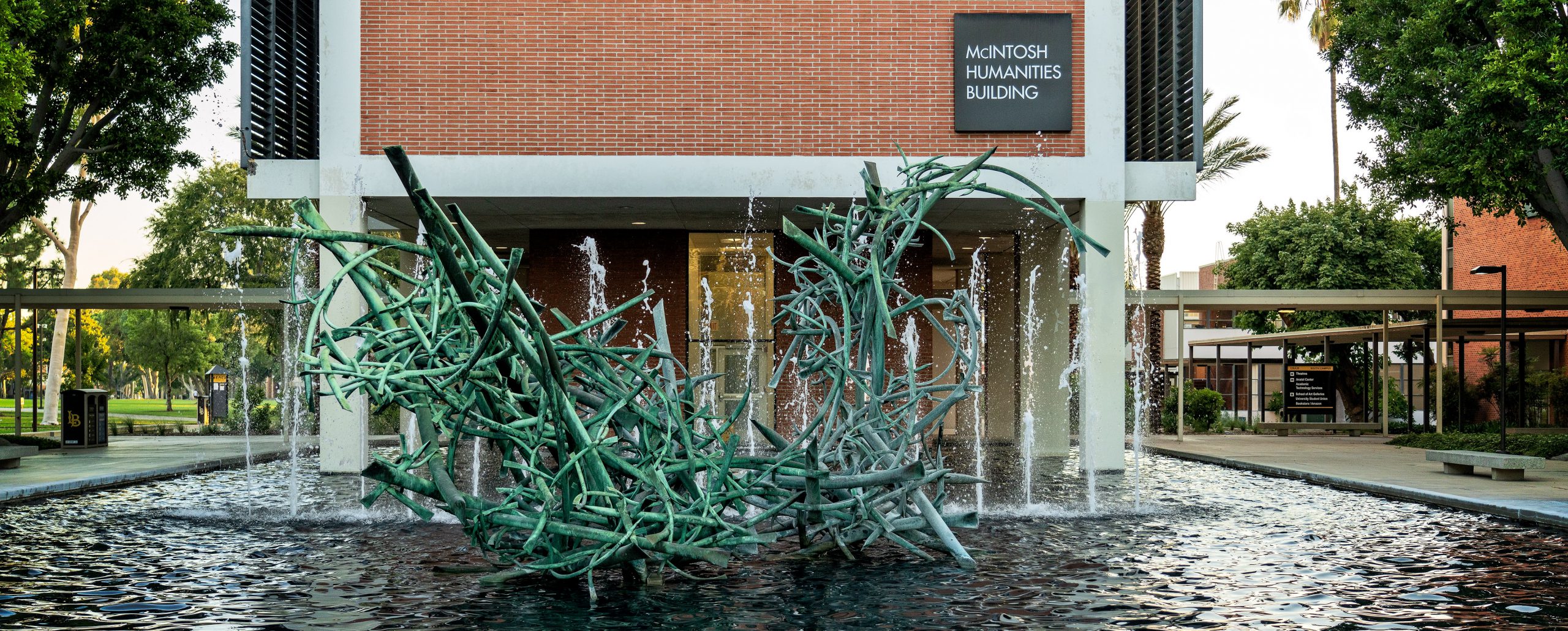American Indian Studies Celebrates 44th Pow Wow Anniversary at CSULB
March 18, 2014March 8th and 9th marked the 44th annual Pow Wow event at CSULB and the 45th year of our American Indian Studies program (AIS). Located on Puvungna, a village and burial site of Tongva peoples, the Cal State Puvungna Pow Wow is a sacred space for many of the Native American community in attendance. The sense of family and community is a large part of the Cal State Puvungna Pow Wow. As CSULB American Indian Studies Professor Cindi Alvitre asserts, our event is a place in which generations of families have been actively involved, and it is like an annual reunion for many.
Indeed, Cal State Puvungnua’s pluri-cultural Pow Wow draws nationwide Native American tribes of all ages. John Dawson, who has been the Master of Ceremonies at the CSULB Pow Wow for about a decade and a dancer and singer prior to that, recently retired from acting as emcee and from his work at Native American programs in Lawndale, CA school districts. As one of the older participants in Cal State Puvungna’s Pow Wow, John Dawson was honored during the Pow Wow as he has stepped down from his position as emcee.
“The tradition of this annual gathering has become not only part of the community here, but also throughout the Southwest part of the United States,” says Dawson.
As a member of the Apache tribe from the San Carlos Reservation in Arizona, Dawson is one of many Native American people who have relocated to Southern California – one of the largest urban areas with a Native American population in the United States.
And this distinct sense of community at the Cal State Puvungna Pow Wow is felt from all ages and generations. Shandiin Yellowhorse (Dinéh), Head Lady Dancer and a student at Los Angeles Harbor College, is a younger member of the CSULB Pow Wow community and expresses a similar sentiment about the atmosphere here. Shandiin grew up with a family of dancers, and so for her, dancing is a way of life.
“I dance not just for myself, but also for my family, for elders, and for those who are unable to dance,” says Shandiin.
Shandiin describes the atmosphere at CSULB as one that fosters her dance as it is a very close family community and immensely supportive.
CSULB student Amanda Passi (Navajo) is yet another example of various age groups present at the event. Vice President of the American Indian Council and a Kinesiology major, Amanda has helped organized the Pow Wows at CSULB for the past three years.
Amanda describes the notable amount of alumni who return to the event and says that they are acknowledged every year through tribal flags that are erected to represent every CSULB Native American alumnus. For Amanda, this importance of recognition for our Native American students positions the CSULB Pow Wow as an extended family event of sorts, in which there is special acknowledgement for many first timers, graduations, the loss of a family member, and other such acknowledgements.
For those whose generations of family members have been attending the Pow Wow here, this recognition and outlet for the loss of a family member is essential. Adrian Garcia of the White Cloud singers describes the generations of his family, dating back to his grandfather to now his grandson, and how important it has been to recognize those who have passed. The White Cloud Singers sing a song called “Drop the Baby” to remember Garcia’s sister, Rae, who died in a car accident driving back from a Pow Wow event years ago. The song was his sister’s favorite and stemmed from a cherished moment in time when she gave, or ‘dropped,’ Garcia’s baby son into their mother’s arms to dance to her favorite song. Garcia emphasizes that all of their songs have significance, usually for a moment in time or a large event. Garcia says that the CSULB community has largely supported them during this time and has acted as an extended family to help as much as possible. For Garcia’s family, the annual CSULB Pow Wow is a time to go back to the last place they saw her and to recognize those who have passed.
For Professor Cindi Alvitre and many others, this connection to the land and its peoples are one of the most important aspects of the Pow Wow here on Puvungna land.
“The fact that there’s an acknowledgement of the land is what makes the Pow Wow here unique,” says Alvitre. “In other Pow Wow areas, the event is often just a venue. Here at CSULB, the Pow Wow is not just a venue. It’s a sacred space.”
As the oldest American Indian Studies program on the West coast, the CSULB AIS program is clearly very much a community and family. It is this sense of community that is represented at the Pow Wow here, and it this sense of family and community that is truly cherished.





